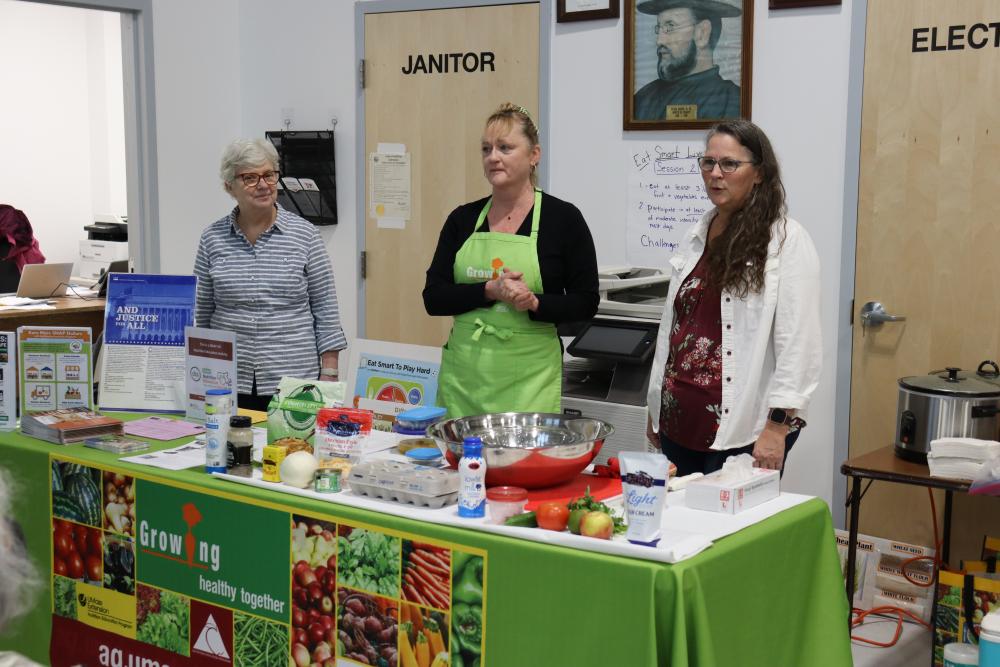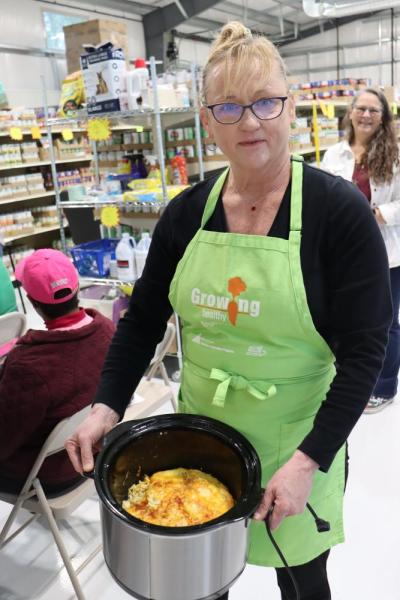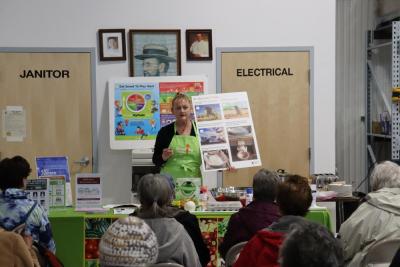More than just enough food: Damien’s Pantry teaches nutrition
Damian’s Food Pantry has a track record of going above and beyond simple nutrition.
The pantry’s new location, which opened its doors in February, was designed with clients’ dignity in mind, said pantry staff, with its shelves set up like the aisles of a grocery store to give those in need freedom in what they choose.
Now, a new program at the food pantry goes one step further, teaching its clients how to use the food they receive in nutritious crock pot recipes.
“Food pantries make it so that people aren’t hungry, but the food is not the most nutritious,” said Denise Ciochini, a nurse getting her master’s degree from the UMass Dartmouth College of Nursing and Health Sciences.
Ciochini first had the idea for a nutrition instruction program over 15 years ago, when she was working in Hyannis helping clients with psychological issues.
“A lot of our clients faced homelessness and food insecurity,” Ciochini said. However, even when they could attend a food pantry, they wouldn’t necessarily know how to prepare what they were given. Ciochini remembers one client who started eating green beans cold out of the can.
At the time, Ciochini’s program didn’t cover the kinds of assistance that would help the problem she saw. In the present day, she was able to revived the idea of doing something with nutrition education as part of her master’s education.
She found a receptive partner in Damien’s Food Pantry.
Executive Director Pauline Lally said a program such as this had been “a dream of mine since I began” in her position.
The program combines practical and conceptual education about nutrition.
During a session on Wednesday, April 3, Carole Guerin, an educator with the University of Massachusetts Amherst Extension Nutrition Education Program, demonstrated a crock pot recipe for a breakfast casserole to an audience of roughly 20 people.
“Any of these recipes can be adapted to whatever your likes are and your dietary needs,” said Guerin.
Guerin also walked attendees through a series of gentle stretches, and taught them about the differences in history and nutritional value between white and whole grains.
Ciochini said she has created 25 recipes which will be available at the food pantry for the program. The ingredients for the recipe will be marked on the shelves of the food pantry, making it easy for clients to take what they need, she said.
“It’s supposed to be about using the food pantry ingredients in the crock pot,” she said.
The program has already attracted attention. Between 10 and 12 people generally attend one section on Tuesday evenings, and around 20 attend the Wednesday meetings, Ciochini said.
And the community has offered significant support in providing the crock pots used for the cooking.


















